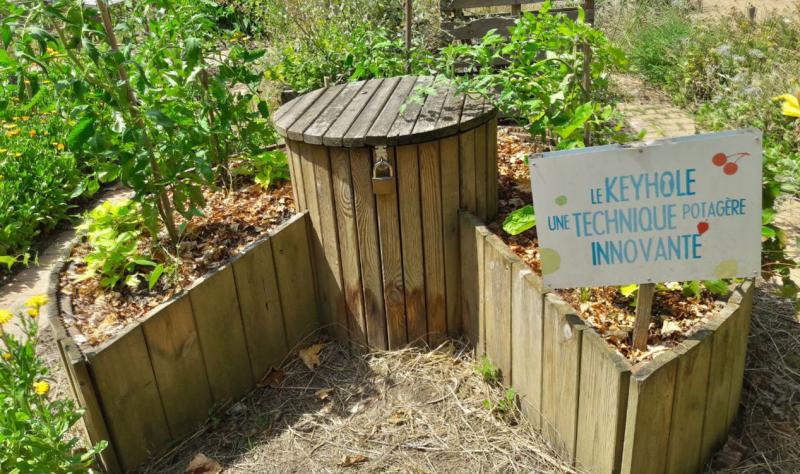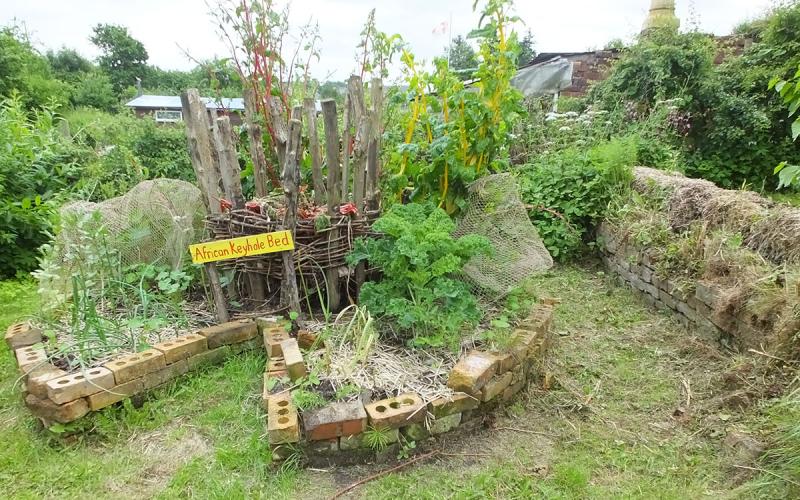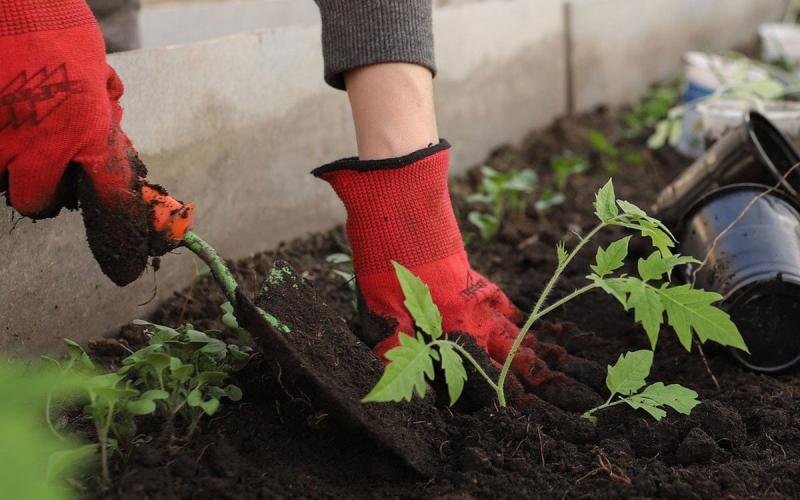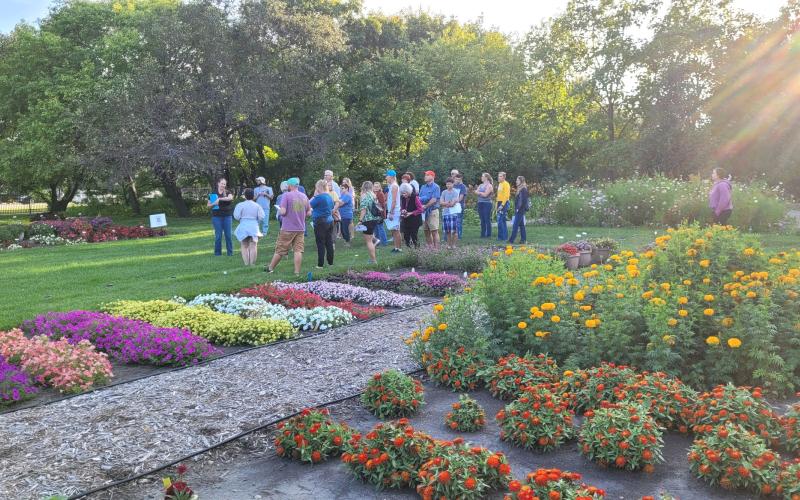Written by Vaughn Reints, SDSU Extension Horticulture Assistant, under the direction, contribution, and review of Robin Buterbaugh.
Introduction

Keyhole gardens are a raised bed design that began in parts of Africa as a way to grow food in dry climates with limited resources. Today, they are utilized in permaculture design (a design method that uses permanent/sustainable agriculture techniques, permanent+agriculture=permaculture) and by home gardeners as a way to create a closed loop growing area that uses waste products as resources. Keyhole beds are compact, circular, or irregular shaped beds with a central compost basket. The keyhole design combines composting, water conservation, and space efficiency. For home gardeners, keyhole gardens provide a way to grow vegetables and herbs in challenging soils, with variable rainfall, and in limited space. This growing method promotes resourcefulness and steady soil improvement over time in an accessible growing space.
Why Keyhole Gardens?
Keyhole gardens direct water toward a compost basket at the center. As kitchen and yard scraps break down, nutrients and moisture move into the surrounding soil. This process supports plant health during dry periods and reduces the need for purchased fertilizers. Additionally, increased organic matter acts like a sponge allowing the soil to retain more water. The raised height and the wedge or keyhole-shaped access point makes the bed easier to manage for gardeners who have difficulty bending or kneeling. A single keyhole garden can produce good yields in a small footprint, which is helpful for households, schools, and community projects that may have limited access to space.
Design Features
A keyhole garden is typically six to eight feet in diameter and about two to three feet high. One side includes a notch that allows the gardener to step into the bed and reach the center without compacting the soil around plants. The core of the design is a compost basket made from wire, sticks, or mesh. Food scraps, leaves, and water are placed into this basket. As materials decompose, nutrients filter into the soil. The bed is filled with alternating layers of coarse organic matter such as sticks or straw, along with leaves, cardboard, manure, and topsoil. This layered build, often called the lasagna method, improves drainage and fertility. Plants can be arranged so that taller crops are near the center and shorter ones are near the edges for good light exposure.
Building a Keyhole Garden

Begin by selecting a sunny location with good drainage. Construct a circular wall from stone, brick, wood, or another durable material, then leave an opening about two feet wide to form the keyhole entrance. Install a compost basket in the center. Fill the bed with alternating layers of organic material and soil until the structure is full. If filling a taller bed, larger logs and branches can be used to fill the space at the bottom so less additional organic material and soil is needed; however, make sure that the wood is not freshly cut or it can tie up nitrogen in the soil as it breaks down. Plant the bed and water through the compost basket so that moisture and nutrients reach the root zone efficiently.
Crops That Grow Well
Keyhole gardens support many common vegetables and herbs. Leafy greens such as lettuce, kale, and spinach perform well when temperatures are cool. Root crops including carrots, radishes, and beets grow successfully in the loose, amended soil. Herbs such as parsley, basil, and cilantro thrive, and different varieties of tomatoes and peppers can also be grown. Vining vegetables can grow on trellises in the center or back of the bed. Some gardeners include flowers like marigolds to help attract pollinators and discourage pests.
Considerations for Climate and Soil Factors
Soil temps in raised bed structures may vary more compared to in-ground beds due to fluctuating nighttime air temperature in the spring. Monitor soil temps before planting to be sure they remain consistent. The thermal mass of stone or brick walls can help hold warmth during autumn, which can extend the season. For heavy clay or sandy soils, a keyhole garden improves fertility and drainage through its layered construction. Regular maintenance is important. The compost basket should be replenished with organic matter and watered so that the system continues to function as intended.
Benefits and Challenges
Keyhole gardens can improve soil health, use water efficiently, and provide easier access for gardeners who have limited mobility. They also offer high productivity in small spaces. The approach does require an initial investment of time and materials to build a sturdy structure. It also depends on consistent composting and watering. In northern climates, gardeners may consider simple covers or other season extension methods to make the most of shoulder seasons.
Summary
Keyhole gardens combine composting, water conservation, and space efficient planting in a single raised bed design. They give gardeners a practical way to produce vegetables, herbs, and flowers when space, soil, or water would otherwise be limited. With regular maintenance and careful construction, keyhole gardens can be a productive and satisfying part of home and community gardening.
Resources
- Illinois Extension, University of Illinois Urbana-Champaign. Keyhole Gardens | The Garden Scoop.
- Michigan State University Extension. African kitchen gardens: An alternative approach to small-scale gardening.
- El Paso County Master Gardeners, Texas A&M AgriLife Extension. Keyhole Gardening Brochure.
- University of Nebraska–Lincoln & University of Illinois. (2018). Raised Beds for Vegetable Production in Urban Agriculture. Agronomy Journal.
- South Dakota State University Extension. Gardening in Raised Beds and Containers in the Northern Great Plains.


